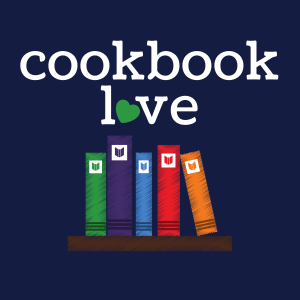
Episode 245: Tips to Organize Your Recipe Writing
 2023-05-18
2023-05-18
Welcome to another episode of the podcast. Today I wanted to share four tools that really helped me get organized when I wrote cookbook #1:
1. A dedicated notebook. I bought a new spiral-bound notebook (that I wouldn’t be afraid to mess up!) and used it to record everything: menus, meal plans, recipes, ideas, and inspirations for everything I cooked and baked. Since I enjoyed cooking and writing it was easy for me to write down all the things. Important point>> It’s not about the price or the style of the notebook that matters, but that you get in the habit of thinking to write everything down and that when you do all your notes are in one place.
2. A digital or physical folder to save labels, food bags, flattened packages, and boxes. When I’m in the recipe idea and development phase, I keep everything, sort of like a kitchen pack-rat. (After the project is finished, I throw everything away). You’ll be surprised how I refer back to a package, bag, box, or can size when I write my recipes. Alternatively, take a photo of the packaging and store it on your phone in a dedicated Google Drive or iCloud folder.
3. Google Sheets: Open a new spreadsheet and keep track of your recipe list here. I color-coded my spreadsheets to know what phase of recipe development or testing I was in with each recipe.
4. Google Docs or Word or Pages: Write a digital copy of each recipe. In the beginning, I saved each recipe in its own document and labeled the version of the recipe each time I saved the recipe.
5. Optional software: Scrivener.I used Scrivener to write three of my four cookbooks. I enjoyed the ability to work on each recipe as its own file and to add metadata about the progress for recipe testing and development.
Apple Podcast App
Google Podcasts
Spotify
Things We Mention In This Episode:
How to Get Paid to Write a Cookbook Free Training
Join the waitlist for Cookbooks on KDP
Scrivener - Book writing software
More Episodes
 2022-09-29
2022-09-29
 2022-08-11
2022-08-11
Create your
podcast in
minutes
- Full-featured podcast site
- Unlimited storage and bandwidth
- Comprehensive podcast stats
- Distribute to Apple Podcasts, Spotify, and more
- Make money with your podcast
It is Free
- Privacy Policy
- Cookie Policy
- Terms of Use
- Consent Preferences
- Copyright © 2015-2024 Podbean.com




